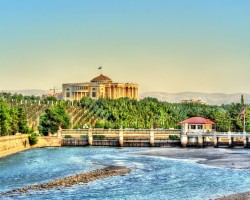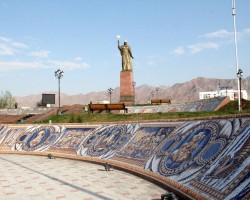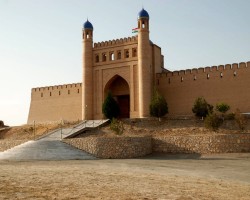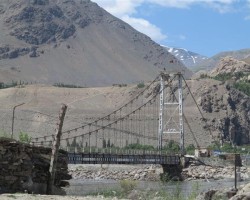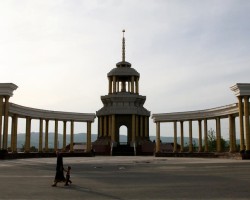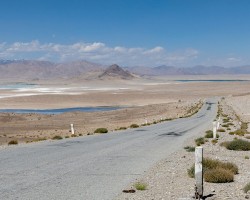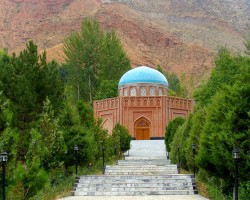Best time to go to Tajikistan for a perfect weather and where to go?
When is the best time to go to Tajikistan?
When is the best time to go to Tajikistan? Here's some information to help you in your decision:
- In July, the weather is beautiful everywhere in Tajikistan
- The best months to go to Dushanbe are April, May, June, July, August, September and October
- On average, the warmest months in Dushanbe are June, July and August, and the coldest month of the year is January
- The rainiest months in this city are February, March, April and May
- The cities with the best climate are Dushanbe, Khodjent, Istaravchan and Kulob, with good weather at least 7 months a year
Where and when to go based on the weather?
Gorno-Badakhshan Autonomous Region
Khorog, Murghab...
Khatlon Region
Dushanbe, Kulob...
Sughd Region
Khodjent, Pendjikent, Istaravchan...
To get all the information about the climate and weather in Tajikistan for a specific month, click on the corresponding link below:
Tajikistan in january Tajikistan in february Tajikistan in march Tajikistan in april Tajikistan in may Tajikistan in june Tajikistan in july Tajikistan in august Tajikistan in september Tajikistan in october Tajikistan in november Tajikistan in december
Best time to travel to Tajikistan by cities
Temperatures and rainfall in Tajikistan
On these 2 graphs, we present the evolution of temperatures of Tajikistan and month-by-month rainfall for the cities of Dushanbe, Khodjent, Istaravchan, Khorog and Kulob.
Peak visitor numbers and tourist seasons in Tajikistan
Find out when Tajikistan has its high tourist season (the period when the influx of tourists is highest) and off-peak tourist season using our data and figures.
Tourist seasons in Tajikistan
The months with low numbers of tourists are: January, February, March, November and December. The number of visitors to Tajikistan is high in: April, May, June, July, August, September and October.
- Very low season in Tajikistan: January, February, March and December.
- Low season in Tajikistan: November.
- High season in Tajikistan: April.
- Peak season in Tajikistan: May, June, July, August, September and October.
Figure: Visitor index for Tajikistan month by month
Average price for flights to Tajikistan
A return flight between London and Dushanbe is generally cheaper if you go in january ($ 785 on average): this is the best time for travellers on a tight budget. In contrast, you may end up paying $ 330 more for your airline ticket to Dushanbe if you go in august.
Find the best price for your flight Flight prices to Tajikistan
Where to go in Tajikistan?
This table allows you to see the maximum temperature for each city and our opinion on the weather month by month (see colour legend below the table).
| Cities | jan. | feb. | mar. | apr. | may | jun. | jul. | aug. | sep. | oct. | nov. | dec. |
| Dushanbe | 47°F | 49°F | 59°F | 70°F | 81°F | 90°F | 97°F | 94°F | 86°F | 72°F | 58°F | 49°F |
| Khodjent | 43°F | 49°F | 61°F | 72°F | 85°F | 94°F | 99°F | 97°F | 88°F | 72°F | 56°F | 45°F |
| Istaravchan | 41°F | 43°F | 56°F | 65°F | 77°F | 85°F | 90°F | 88°F | 79°F | 65°F | 50°F | 41°F |
| Khorog | 18°F | 20°F | 27°F | 34°F | 43°F | 52°F | 61°F | 61°F | 56°F | 41°F | 29°F | 20°F |
| Kulob | 45°F | 50°F | 63°F | 74°F | 85°F | 94°F | 99°F | 97°F | 90°F | 76°F | 59°F | 49°F |
| Murghab | 11°F | 16°F | 27°F | 36°F | 47°F | 54°F | 63°F | 61°F | 54°F | 40°F | 25°F | 13°F |
| Pendjikent | 41°F | 43°F | 54°F | 65°F | 76°F | 83°F | 88°F | 86°F | 79°F | 65°F | 52°F | 43°F |
Legend:
perfect weather
good weather
tolerable weather
bad weather
very bad weather
About Tajikistan
What can I do in Tajikistan?
Beaches / swimming
Nature and countryside
Culture and heritage
Sports
Family travel
Crafts / shopping
Gastronomy
Nightlife
Is this weather information for Tajikistan reliable?
Climate data for Tajikistan has been gathered every day since January 2009. The analysis of these meteorological data for Tajikistan allows us to determine the average for each month in Dushanbe, Khodjent, Istaravchan, Khorog, Kulob, Murghab and Pendjikent.
So yes: this data is reliable except in cases of temporary climate disruption in the region.

